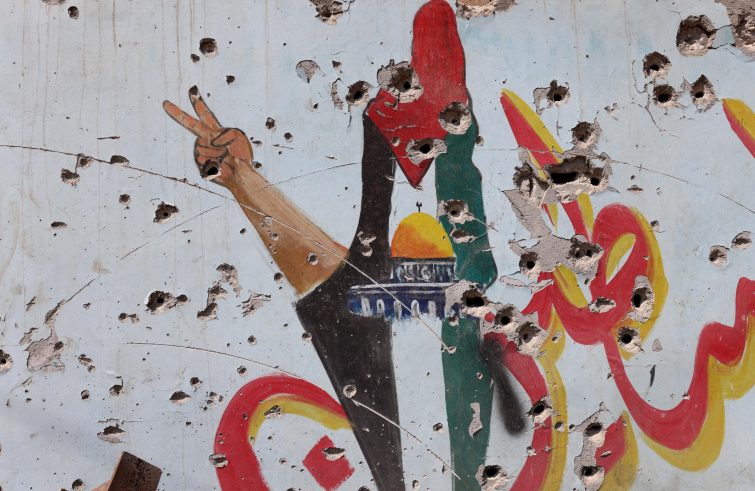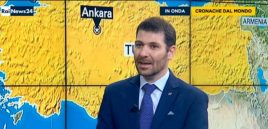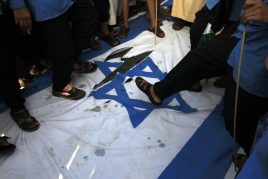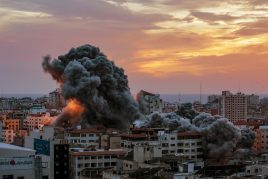
The Israeli bombardment of a besieged Gaza Strip without electricity, water, food and fuel is continuing. Hundreds of Hamas military targets have been hit by jets bearing the Star of David, while military forces and vehicles are massing on the borders of the Palestinian enclave in preparation for a ground invasion. Israel has summoned 300,000 reservists. The Israeli army has not entered the Strip, which covers 365 square kilometres and is home to 2.3 million people, since 2014. Its inhabitants have been strangled by an Israeli embargo and by the hardline Hamas regime since 2007. The numbers and the forces on the ground make it look like a foregone conclusion, but there are many unknowns. The Israeli army has a huge numerical advantage, sophisticated military technology and well-established logistical capabilities. For its part, Hamas has a high capacity for mobilisation and combat in a densely populated urban environment such as the Strip, and a better organised defence thanks to its anti-tank missiles and mines, mortars and machine guns. Not to mention the extensive network of tunnels that runs under the Strip, allowing Hamas terrorists to move freely. Moreover, the Israeli military campaigns of recent years (2008, 2012, 2014 and 2021) have allowed the Islamic movement’s leaders to study the enemy and its tactics in depth.
 Entering Gaza will be a massacre for the two warring factions and will take its toll on the civilian population and the 200 or so hostages, Israeli and otherwise, held by Hamas. SIR discussed this offensive with Claudio Bertolotti, an expert at the Italian Institute for International Political Studies (ISPI) and director of Start InSight, Strategic Analysts and Research Team (http://www.startinsight.eu).
Entering Gaza will be a massacre for the two warring factions and will take its toll on the civilian population and the 200 or so hostages, Israeli and otherwise, held by Hamas. SIR discussed this offensive with Claudio Bertolotti, an expert at the Italian Institute for International Political Studies (ISPI) and director of Start InSight, Strategic Analysts and Research Team (http://www.startinsight.eu).
There is growing talk of an Israeli ground invasion of Gaza. What are the alternatives?
In technical terms, we should speak of an ‘offensive operation’, which can have different dynamics and outcomes. On the one hand, it could be an operation with reduced military units, supported by ground forces such as tanks, artillery, air forces and drones. This type of operation is aimed at striking and hitting pre-designated Hamas targets. It does not involve a long-term presence in Gaza. In my view, this is a possible but highly unlikely scenario.
Is the massive deployment of troops a more feasible option?
A massive deployment of troops to destroy and combat Hamas’s counter-insurgency operation, which will be waged on several defensive lines when Israel invades Gaza, is a more likely scenario. It should be noted that Hamas has been reorganising its defence structures in recent years. Suffice it to mention the extensive network of fortified tunnels, sophisticated and capable of ensuring rapid internal communication and movement. This will be very dangerous, and for Israel it will mean using the most efficient infantry, as opposed to armoured vehicles, to counter Hamas. However, a long-term campaign could prove more problematic than a short-term operation, with the risk of increased casualties for Israel, Hamas, its Islamic Jihad allies and the civilian population.
 Is there a military scenario that Israel should avoid at all costs?
Is there a military scenario that Israel should avoid at all costs?
The scenario involving the extensive use of special armoured forces, i.e. tanks, not only in support, but also in the vicinity of, or even within, urban areas. This is the last scenario a military strategist would like to see, because armoured vehicles are likely to be ineffective and more vulnerable in urban areas, given their considerable tonnage and very limited manoeuvrability.
How long does it take to plan such a military operation?
A long time. As I said, in the operational planning phase we try to avoid fighting in residential areas. This is because it is time-consuming, because it involves a high number of casualties, and because it involves the risk of losing and under-utilising high-tech and expensive armoured vehicles.
Israel has called up 300,000 reservists: what might their role be in this war?
The Israeli army is made up of a professional and a conscript part. It is a people’s militia. The professionals are on the front line with highly specialised missions. Fighting in populated areas, as in the case of Gaza, is the competence of professional units with a medium to high level of training. We are not just talking about special or elite units. These are soldiers who will ‘recover’ a building in teams of 6 to 8. Conscripts will be used to provide the security framework of military bases and camps and to provide combat support, i.e. artillery, mortars, logistics, communications. It is likely that professional units will be used in the early stages of the invasion.
How might the civilian population of Gaza react to the Israeli invasion?
The people of Gaza who will leave, if they can, are those who have already decided not to get involved in a life-threatening conflict. Those who will stay will do so out of a conscious choice or out of necessity. These people could provide moral and material support to the Hamas fighters, who are not very numerous, perhaps 25,000.
 Is the Israeli decision to besiege Gaza, cutting off electricity, water, food and fuel, an emotional or a rational one? And how does this prepare for a military invasion?
Is the Israeli decision to besiege Gaza, cutting off electricity, water, food and fuel, an emotional or a rational one? And how does this prepare for a military invasion?
I think it is a rational decision. Israel does not intend to use an iron fist in a velvet glove, rather its action will be decisive and explicitly violent. This will have two consequences: it will limit the opponents’ access to basic necessities and, at the same time, it will alienate the civilian population from Hamas. This is an overly optimistic ambition, given that Hamas fighters are highly organised and capable of sustaining a protracted conflict. Moreover, they are militiamen willing to die and aware of the risk of military defeat. However, defeat on the battlefield could be interpreted as victory in the long term. The new martyrs who have died in battle may encourage others to emulate them.
How much danger are the Hamas hostages facing? We have seen shocking images circulating in the media…
My fears are not so much of Hamas as we knew it until a few years ago, but of the real possibility of contamination that the ISIS phenomenon, the Islamic State, has managed to spread within the jihadist world. The role of the media, on which Hamas relied in this attack – in which mostly civilian men, women, old men and children were barbarically killed – was to instil terror. The images circulating in the media are extremely vicious and this is the effect of the post-Islamic State phenomenon. The latter, which has collapsed territorially, has in fact taken root in the new jihadist movements that have recruited the young generations.










